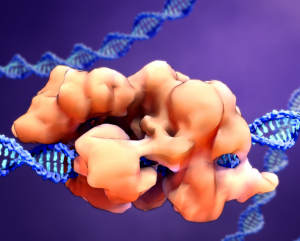CRISPR Causes Mutations that are Passed on to Offspring
It is 2022, and even with the explosion of medical research over the last decade using CRISPR gene editing, the unwanted and off-target mutations caused by the game-changing tool have not been controlled. Furthermore, studies consistently find that these mutations are directly inherited by any offspring produced. Indeed, CRISPR has facilitated great strides in curing single-genome diseases, such as sickle-cell anemia. But these are cases where adults were treated, and embryos/germ cells (eggs and sperm) …
Mar
2020 Was a Breakout Year for Crispr
NCER Comments: Sickle Cell Anemia is a heritable disease that 1 in every 13 Black or African American babies possess when born. Red blood cells are abnormally shaped, so are unable to carry oxygen needed for all tissues and organs to survive. The average lifespan is only 40 years, but a new development using the CRISPR gene editing tool looks like a true cure.
2020 Was a Breakout
Apr
He Jiankui faces three years in prison for CRISPR babies
MIT Technology Review
The Chinese scientist and two associates were sentenced after a secret trial.
The Chinese scientist who created the world’s first gene-edited children has been sentenced to three years in prison by a Chinese court.
He Jiankui, a biophysicist trained at Rice University and Stanford, shocked the world last year with his claim to have created genetically modified humans, twins referred to as Lulu and Nana.
In
The newest gene editor radically improves on CRISPR
NCER Notes:
Research has shown that the CRISPR gene editing tool (which cuts out and replaces diseased DNA) holds great potential for healing disease, but currently poses a significant risk to humans due to frequent unintended mistakes, or “off-target” mutations in DNA. A solution is being pursued, but in the meantime, a new kind of gene editing, called “Prime Editing” has just been announced this week. Prime Editing uses much of CRISPR technology, but appears …
Scientists Push for a Moratorium on Human Germline Editing
From NCER:
In response to the blatant breach of ethics with the birth of DNA-modified twins last year in China, seven of the most powerful international scientific research entities have joined forces to propose a global moratorium on editing heritable DNA to create genetically-modified children. Thirty nations already have banned this research, and while this moratorium is a good first step toward regulation, it is not a ban, and therefore it clearly acknowledges the eventuality …
As a genome editing summit opens in Hong Kong, questions abound over China, and why it quietly bowed out.
Due to the generosity of supporters, a representative of NCER was one of only 400 attendees at the Second International Genome Editing Summit in Hong Kong, 11/2018. There, a bombshell report broke that one of the Chinese scientists scheduled to speak at the Summit announced he used the CRISPR gene tool to edit the DNA of twins that were then born in October, hence breaking the international moratorium on clinical Genome Editing in human embryos. …
REVEALED: More than 70 PERCENT of Americans are in favor of gene editing to protect children from deadly diseases
Are you part of the 70% of Americans who are in favor of creating babies who would be protected from diseases? No one would wish illness upon humans, let alone babies, so upon first reflection, this seems to be a compassionate route to take in medicine. However, there are many dire complications to consider: What if unintended, harmful mutations are made to these babies? What if the technology is abused by using it to modify …
CRISPR cures inherited disorder in mice, paving way for genetic therapy before birth
CRISPR cures inherited disorder in mice
On a very positive ethical note, researchers at the University of Pennsylvania have utilized CRISPR to cure mice of a fatal liver disease while in utero! This “proof of concept” trial will pave the way to potentially curing genetic diseases in humans while the fetus is still in the mothers womb. Using a newer form of CRISPR which doesn’t need to cut out damaged DNA to replace it, CRISPR …
What is CRISPR gene editing, and how does it work?
by Merlin Crossley | 3 Feb 2018

What is CRISPR gene editing, and how does it work?
You’ve probably read stories about new research using the gene editing technique CRISPR, also called CRISPR/Cas9. The scientific world is captivated by this revolutionary technology, since it is easier, cheaper and more efficient than previous strategies for modifying DNA.
The term CRISPR/Cas9 stands for Clustered Regularly Interspaced Short Palindromic Repeats/CRISPR associated protein 9. The names reflect important features …
Welcome to the CRISPR Zoo!
Nature Sara Reardon 3/09/2016
Timothy Doran’s 11-year-old daughter is allergic to eggs. And like about 2% of children worldwide who share the condition, she is unable to receive many routine vaccinations because they are produced using chicken eggs.
Doran, a molecular biologist at the Commonwealth Scientific and Industrial Research Organisation (CSIRO) in Geelong, Australia, thinks that he could solve this problem using the powerful gene-editing tool CRISPR–Cas9. Most egg allergies are caused by one of …
- 1
- 2



